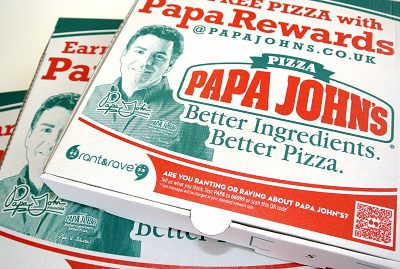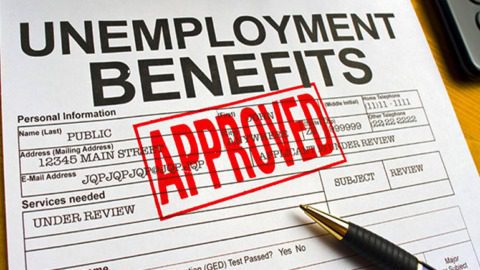 Human nature being what it is, sooner or later a certain number of top corporate executives are going to behave badly in one way or another. They will commit fraud and insider trading; express prejudiced beliefs or use racial, ethnic or religious slurs; sexually harass people or condone such behavior in others. And in the current communications landscape, with everyone equipped with a video camera and a social media megaphone, these behaviors are more than likely to become public knowledge. When the inevitable happens, what is a brand to do?
Human nature being what it is, sooner or later a certain number of top corporate executives are going to behave badly in one way or another. They will commit fraud and insider trading; express prejudiced beliefs or use racial, ethnic or religious slurs; sexually harass people or condone such behavior in others. And in the current communications landscape, with everyone equipped with a video camera and a social media megaphone, these behaviors are more than likely to become public knowledge. When the inevitable happens, what is a brand to do?
These are questions that branding expert Deb Gabor, CEO of Sol Marketing and author of the book Branding Is Sex, has been dealing with her whole professional life. They are also increasingly urgent queries for companies — particularly with the parade of CEOs Behaving Badly that have marched through the public square during the past year, from Harvey Weinstein and CBS’ Les Moonves to John Schnatter of Papa John’s Pizza. In the last case, the accusations of racist remarks and sexual harassment are particularly damaging because Schnatter has long been the public face of the company.
In an interview with Retail TouchPoints, Gabor revealed what brands should (and should not) do in these situations:
• Control the narrative: Don’t wait too long to make an official statement, even if it’s just an acknowledgement that the company understands the gravity of the situation;
• Take responsibility: Brands may worry about admitting fault in terms of legal liability, but an active statement is better than a passive non-apology apology;
• Keep internal squabbles as quiet as possible: This may not be possible when the accused executive is unwilling to admit fault, as is the case with Schnatter; and
• Build a culture of accountability and responsibility: Start at the top of the company and extend positive values to all executives and employees as well as franchisees, partners and suppliers.
Retail TouchPoints (RTP): There does seem to be an epidemic of bad behavior at the top of the corporate world these days. Are these problems getting worse?
Deb Gabor: I would say that there has been bad behavior in business for a very long time. It’s true that over the last year or so we’ve seen an uptick in the number of cases that have come to light, but I think that’s because people are becoming more confident about expressing their concerns and sharing their experiences, and on the whole that’s a good thing. I don’t think there’s more bad behavior, but I think there’s more discovery and expression of it.
RTP: In terms of the impact on a brand, are there kinds of bad behavior that are more harmful than others?
Gabor: Doing something like insider trading is never good, but it’s not as bad as when the behavior puts actual human beings in the crossfire. Really egregious instances of sexual harassment and discrimination, when people have been hurt physically, mentally and emotionally, certainly seem worse. Things escalate from a brand crisis perspective when there are human beings involved.
Additionally, any time you put all your eggs in one basket with a spokesperson, you’re potentially putting your brand at risk. Say you’re a sporting goods manufacturer and you have a $90 million contract with an NBA player, and that person becomes synonymous with your brand. If they do something untoward, they are putting your brand at risk. We can’t manage human behavior, and I think brands have become way too reliant on a single human being.
RTP: Are there different ways companies should react if it’s one type of behavior versus another?
Gabor: It’s really less about what’s been done as about how fast the story takes on a life of its own today. I’ve been working on brand strategy my whole adult life, meaning I started before the Internet. Today news cycles happen so quickly that there’s a constant level of dialogue going on about your brand. Whether it’s an employee leaking information or a customer experiencing something negative, everyone has a platform. So, with any crisis or brand communication plan, things have to happen at speed.
When a crisis does occur, the first thing I notice is how long before the company itself makes a decision, formulates a plan and actually communicates it. I go back to one of my favorites, the United Airlines crisis in April 2017 with the video of a man being dragged off a flight. I believe it was 48 hours before anyone from the company said anything. If you’re not controlling the narrative, the audience is controlling it. Being out there quickly with a plan, and immediately accepting responsibility, is very important.
RTP: What about when it’s a situation like John Schnatter, where you have competing narratives?
Gabor: When it’s the head of the company and/or the face of the brand, the company may not have time to mobilize and say something about the issue. And in this case the accused person is denying the bad behavior and actively fighting against the company, saying in essence ‘I should still be the face of the brand, the company performed better when I was leading it.’ When that person is also a majority shareholder, it’s really difficult for the company to control the narrative. Papa John’s is really a case study in what not to do. If any brand will collapse under the weight of a brand crisis caused by the CEO, it’s probably that one. They had been circling the drain anyway with pricing and quality issues, so he’s not the entire cause of the brand being in the toilet — but having the guy with his name on the door fighting won’t help anything.
RTP: Aren’t companies often reluctant to take responsibility for a problem, particularly if it’s just an accusation that hasn’t yet been proved?
Gabor: There’s always caution on the legal side that can keep a company from making any kind of definitive statement; the lawyers will always say ‘Don’t hold yourself accountable.’ But from a brand perspective, perception is reality. You can craft a statement that says that if a single person says they were hurt that we take that seriously and will investigate it thoroughly. I believe you have to separate legality from the public perception. There is a way to take responsibility that uses an active voice versus a passive voice.
RTP: What are some best practices for either avoiding bad situations or dealing with them when they happen?
Gabor: First of all, don’t do bad things. This goes all the way back to having a culture of responsibility in an organization that starts at the top. The company’s culture is intertwined with your brand, and the public face has to match what’s on the inside of the company. Make sure you’re very clear about what your values and beliefs are, and that they align with your customers, employees, vendors, franchisees, etc. Build a healthy, accountable corporate culture and make sure everyone is living up to that, all day, every day — from the receptionist or a line worker all the way up to the CEO.
Second, be prepared in the eventuality that something does happen. Sometimes it’s not bad behavior by an individual but some other issue. Blue Bell Ice Cream had to deal with a serious listeria outbreak at a manufacturing plant in 2015. They closed a plant for almost two years, but continued to pay many employees so that they could maintain their livelihoods. When the plant re-opened, people were lined up around the block to buy a gallon of ice cream, because it is such a beloved brand here in Texas. It’s not just words but actions that are really important. Brands that weather crises are the ones that have solid relationships, that have built up trust and deep emotional connections with their customers and stakeholders over a long period of time.
RTP: Do you have any examples of brands that handle crises well?
Gabor: I would say Starbucks is a brand that is going to weather their most recent crisis [over racist actions at a Philadelphia location], because they behaved in a way that matched directly to their values as an organization. Whether taking everyone out of work for a day for inclusion training will actually fix the issues is debatable, but from a brand communications perspective, they did a lot of things right. They took responsibility very quickly, their CEO was a very public face in the crisis, there was honesty and authenticity to their response, and the letter on their site was a textbook in how to handle a crisis. Starbucks is delivering on that promise.The question about Papa John’s is whether they are one of those brands that is emotionally connected, and my gut tells me that they are not.













